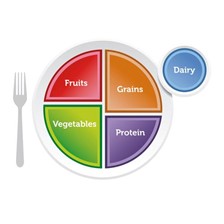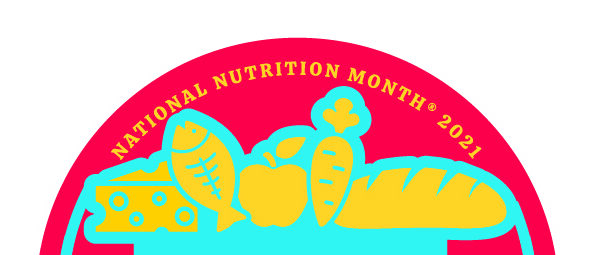March has been nominated as National Nutrition Month® by the Academy of Nutrition and Dietetics and we could not be more excited! This year, we want to celebrate diversity in nutrition with the theme “Personalize Your Plate.” We each have different bodies, cultural backgrounds and lifestyles and it’s okay for our plates to reflect that.
 MyPlate: In 2011, the USDA created “MyPlate” to give us a guide for creating a well-balanced meal. MyPlate includes the five main food groups in recommended portion sizes to support good health.*
MyPlate: In 2011, the USDA created “MyPlate” to give us a guide for creating a well-balanced meal. MyPlate includes the five main food groups in recommended portion sizes to support good health.*
What to include on your plate:
Fruit adds more than just color to a balanced plate, it also provides essential vitamins and dietary fiber that’s good for your gut. Add a serving of fruit to your plate that is the size of your palm. Try these diverse options:
Vegetable colors come from compounds that help protect your body against certain cancers and diseases. Because they have so many health benefits, it is recommended to eat vegetables with every meal. Add a serving of veggies to your plate that is roughly the size of your fist.Try these veggie-filled options:
Grains are an important source of B-vitamins required by your body to make energy. Grains also provide a large portion of your daily dietary fiber. The dietary guidelines recommend making half of your grains whole grains. Add a serving of whole grains to your plate that is roughly the size of your fist. Some ideas for adding whole grains to your plate:
Protein can come from animal or plant sources. When you eat protein, it provides building blocks for your muscles to rebuild after exercise. Add a serving of protein to your plate that is the size of your palm.Try these protein-packed options:
Dairy products are the main source of calcium in your diet, and calcium is important for bone health. Eating calcium-rich foods is especially important as we age. If you are unable to eat dairy products, plant “milks” can be substituted as long as they contain calcium (look for dairy-free products that are labeled “fortified.”) A serving of dairy is one-cup or eight ounces. Try these:
* Note, if you have dietary restrictions or a health condition, your plate may look different. A registered dietitian nutritionist is an expert on healthy eating and can make the best recommendations for you. Find one near you here.
Written by Sarah Hershey, nutrition student at Simmons University


